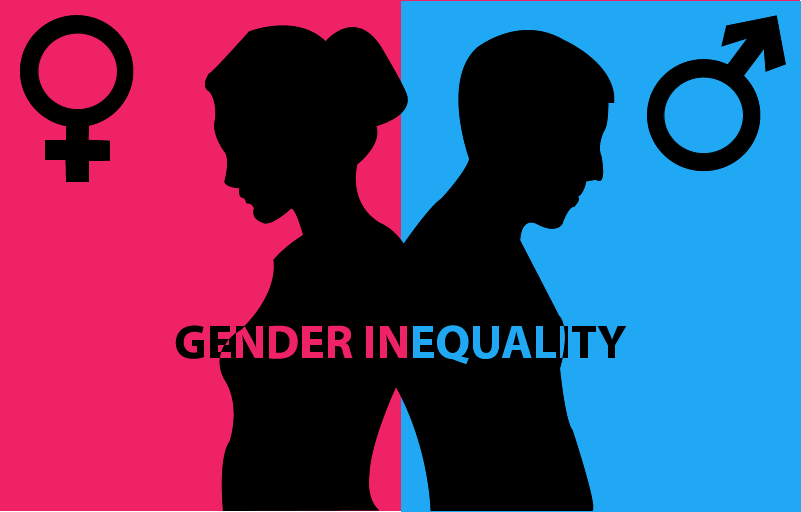“He’s the best man for the job.” It is hard to imagine a more chauvinistic and arrogant statement than that! Yet variations on this phrase have been uttered by men about men forever, in spite of changes to cultural norms. In his press conference announcing the Clarence Thomas Supreme Court nomination, President George H.W. Bush used the phrase “best man” several times, even though the Clarence Thomas nomination hearings were filled with scandal and acrimony, and he was confirmed by the narrowest vote margin in history.
In the corporate workplace of today, it is most assuredly not the workplace of 50 years ago. There’s a computer and telephone on every desk, and smoking has been banned in almost every office. Women are no longer limited to subservient roles. In fact, many subservient roles traditionally staffed by women in the 20th century have ceased to exist. Computers and automation have drastically reduced the need for typists and switchboard operators. On the other hand, even though the secretary role has been reclassified to administrative assistant to make it more gender neutral, the reality is that only 5% of admin jobs are held by men. And at the other end of the spectrum, only 5% of Fortune 500 firms are led by women.
Gender discrimination takes many different forms. One of the worst is unequal pay for equal work. So often it was justified, erroneously, by the notion that men had families to support while women were second wage earners. In this day and age, there is simply no excuse for this pattern of behavior to exist, and it is against the law. Most large corporations have programs designed to ensure equality of pay, and the wage gap not attributable to differences in responsibility or seniority is about 5%. In large part, countless discrimination lawsuits in the 80s and 90s pushed firms in this direction, rather than just simply a sense that they need to treat everyone fairly. However, the so-called glass ceiling is still largely intact. Corporations have been abysmal failures at promoting gender equality for positions in senior management. When comparing the earnings of women to the earnings of men, women earn 80 cents for each dollar made by men.
The fact that women make up 95% of administrative assistants and 5% of CEOs shows the enduring false perception that certain roles are best suited to a specific gender. Of course, the reality is that there is no reason or justification for putting men ahead of women for executive level roles. It is not like there is a workforce population imbalance, as women make up just over half the entry-level workers at corporations. But at some point in their careers, women on average are simply denied the opportunity to advance more frequently than men. Only 1/3 of managers and 1/4 of executives are women. The increasing rate of underrepresentation with level is the primary source of wage inequality in the US.
Ashton Carter, the US Defense Secretary, made one of the most impactful decisions in history to promote gender equality in America. He removed the final barriers that prohibited women from even applying for certain military roles. This will have lasting effects for decades. Women will be able to serve on SEAL teams, Special Operations, Marine infantry, and other roles. Even though this removes barriers to the last remaining 10% of military jobs that had previously prohibited women, it isn’t the number that matters. Rather, this action invalidates a deeply rooted perception that women are incapable by nature. Over time, this will attract more women to the armed services, and lead to more women in senior military leadership roles.
Nowhere in America is gender bias more clear than in politics. America has never had a woman as President, nor has a woman ever been the Presidential nominee for a major political party. Two women have been Vice Presidential nominees; both tickets lost. No woman has ever been the US Senate Majority Leader. Only one woman, Nancy Pelosi, has been elected Speaker of the US House. The 2016 Presidential race may finally level the playing field, if Hillary Clinton is both nominated and elected. Regardless of your opinion of Hillary or the outcome of the election, her presence on the national stage continues to inspire women of all ages to stand up for themselves in the face of discriminatory practices.
In an ideal world, intrinsic factors such as race or gender would have no bearing on a person’ s position or pay. America is moving, too slowly, in the direction of equality. The proportion of women in Congress has risen from 5% in 1981 to 20% today. Is it a triumph that Congress has experienced increasing diversity, or is the frustratingly slow pace of change an indication of failed policies? If we assume that the percentage of women in Congress goes up by 1% for each Congressional election cycle, it will be 60 years before equality is reached. Will gender equality in the corporate workplace proceed at this slow rate too? If this is the case, no one in today’s workforce will experience true gender equality in their careers or even in their lifetimes.
A combination of approaches can speed the rate of equalization and close the remaining pay gaps. Girls and young women clearly benefit from having positive female role models in positions of high stature. They further can benefit from the notion that women both deserve and should have no reservations about pressing their managers for fair treatment and pay. This bottom-up approach will make it more likely that women will pursue promotions and change jobs or even companies if their treatment is poor. As far as top-down goes, this literally starts in the board room.
Corporate boards must be vigilant in seeking out talented women for seats, and further must tie CEO compensation to measures of increasing diversity. No CEO should be handcuffed by a mandate to make all management and executive positions equally represented by gender within a year. But every CEO should be incented to increase the rate at which women are promoted to management and executive roles. The Board should make it clear to the CEO the following truth: lack of gender diversity in the C-suite and senior management puts the firm at a competitive disadvantage.
Firms seen as having strong diversity will attract and retain top talent, regardless of race or gender, and will have reputations that are more conducive to attracting and retaining clients.

Devin C. Hughes is a speaker, writer & storyteller from Washington D.C. who now lives in Southern CA. He is the author of five books. He is currently traveling the world with a mission to help people change their lifestyle for good. Connect with him via Facebook: https://www.facebook.com/ChiefInspirationOfficer and follow him on Twitter @devinchughes.





